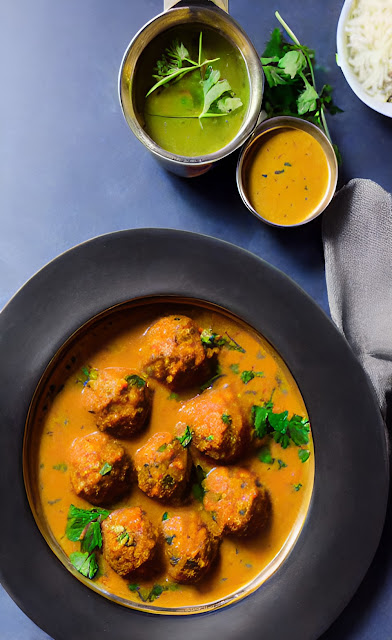Rosquillas of Santa Clara

Las Rosquillas de Santa Clara or "de Aire" (of air) are very traditional in Salamanca and Zamora, Spain, on the border with Portugal. Their name comes from the fact that the interior is practically hollow while the exterior must be crispy. Because of this, one of the first things that surprises when grabbing one is how light they are. This "emptiness" inside is their charm but also their downfall. Let me explain. Achieving this effect requires not only the right way to make the doughnut shape but also the right temperature of the oven or frying, among other things. If not done properly, you would end up with a compact doughnut without much appeal. However, if someone thinks that everything depends on the baking powder used, they are mistaken. In fact, authentic doughnuts do not contain it, relying entirely on those "collateral" things that nobody pays attention to.
Then there is another detail that draws a lot of attention, and that is the meringue with which each of the doughnuts is adorned. It is the cherry on top that every cake needs.
INGREDIENTS:
- 250 grams of flour (8.8 ounces)
- 100 grams of sugar (3.5 ounces)
- 3 eggs
- 100 ml (half a cup) of extra virgin olive oil
- 1 tablespoon of anise seeds*
- 250 g of wheat flour (8.8 ounces)
- 1 teaspoon of baking powder (Royal type)**
- For the meringue:
- 150 grams of powdered sugar (5.3 ounces)
- 1 egg
- 1 lemon
For frying ***
- Abundant sunflower oil
* In some recipe books, they are optional, but they add a spectacular flavor touch, so I recommend using them.
** If you dare, you can do without baking powder (I'll explain the way later).
*** They can be baked or fried.
First, we are going to flavor the extra virgin olive oil using the lemon peel. To do this, heat the oil in a frying pan over medium-low heat and fry the lemon peel in it - without the white part that would make it bitter - until it softens. Remove the peel and set aside, letting the oil cool completely.
In another pan without oil and over low heat, toast the anise seeds. Once toasted, crush them in a mortar and set aside. This is a common mistake, crushing the seeds raw.
Now we can start making the doughnuts.
In a bowl, beat 3 eggs (because the fourth one is reserved for the meringue) with the sugar until it forms foam. If you have an electric mixer, now is the time to use it. Then add the oil that we have flavored with the lemon and the crushed anise seeds.
Mix the baking powder with the sifted flour - so that it doesn't lump - and add it to the egg and sugar mixture little by little. Work the dough to make it homogeneous. Good kneading is fundamental. As mentioned earlier, if you dare, do not use baking powder. Now, pay attention. You have to let it rest for an hour. If you don't let it rest, the doughnuts won't turn out as they should.
Separate pieces the size of a ping pong ball, make them round, and place them on a baking tray covered with parchment paper. Flatten the balls and make a hole in the center with your finger. Separate the doughs so they don't stick together as they rise (separate them quite a bit, they rise a lot). They don't rise much, but it's better to be safe. You can also make the ball and then stretch it into a thin thread that you will join at the ends. This way, it will be harder for the dough to close the hole when it rises, turning into what is called a blind doughnut.
There is another way that consists of putting the dough in a pastry bag with a wide nozzle and making the doughnuts directly on the parchment paper that we will take to the oven (obviously, it only works for the oven, not for frying). The reason is that by squeezing the bag, we add air to the dough, and it is easier for it to inflate later. I'm told that there are very skillful people who can do this directly in the frying pan with oil, but I don't recommend it because it's an invitation to an accident due to splashing.
If you want to bake them, preheat the oven to 200 degrees Celsius (392 degrees Fahrenheit) and when it has reached the temperature, bake the doughnuts for 15 minutes.
Remove them and let them cool. If the doughnut has grown more than twice its size, it almost certainly turned out well and is well inflated.
Now let's make the meringue. To do this, beat in a bowl with the beaters the egg white that we had reserved (only the egg white), the powdered sugar, and a few drops of lemon juice. It must be beaten for a long time, so if you still have the electric beaters handy, now is the time to use them again. It is best to gradually add the powdered sugar until the meringue is thick enough to stand up on the beaters. With this meringue, we paint the doughnuts on top to give them the final touch. It is very important to paint them when they are still hot.
Leave them in the air for the meringue to harden, and they are ready to eat. As you can see, the egg white is raw. If you are somewhat apprehensive about using raw egg due to possible salmonella, it is best to buy pasteurized egg white.
If you prefer to fry them instead of baking, add a good amount of oil to a pan so that the doughnuts float. Heat until, when you throw a piece of dough as a test, it ascends to the surface with a good bubbling. That is the precise moment to introduce the raw doughnuts without touching or flipping them, let them grow and brown.
When they float and the bubbling has ceased, remove them to a rack to drain off excess oil. Then you can also place them on a paper towel to finish drying, at which point you paint them with the meringue before they cool.
You can be sure you will love them !



Comments